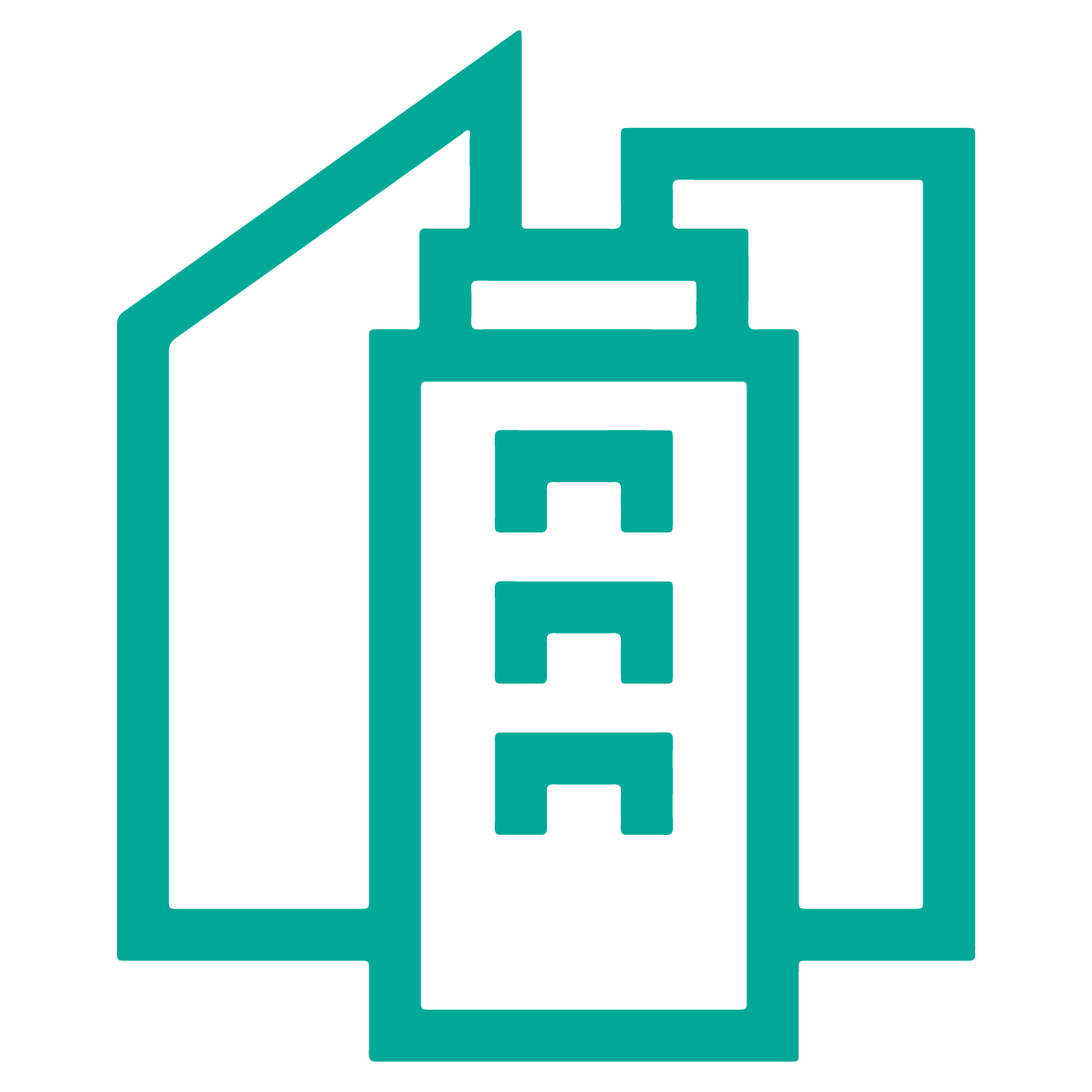Summary
This initiative focuses on development and implementation of Local Area Development Plans (LADPs) in Giza and Qalyubeya Governorates within the Greater Cairo Region. The LADP is a participatory plan set between the strategic and detailed planning levels, providing a development vision for an area. It analyses the local context by integrating urban, social, economic, environmental and institutional needs to identify challenges, set development objectives and propose integrated solutions.
Background and Objective
The LADP methodology was developed through the Participatory Infrastructure Project (PIP), co-funded by the European Union and German Government, and implemented by GIZ Egypt with the Ministry of Housing, Utilities, and Urban Communities, represented by the General Organisation for Physical Planning (GOPP) in coordination with the Urban Development Fund (UDF). The PIP focused on improving the provision of infrastructure and basic services in 9 informal areas in the GRC through an integrated and participatory approach. It developed 15 LADPs in total. This initiative centers on the successful development of 9 LADPs in the Giza and Qalyubeya Governorates, carried out by the main consultant, Associated Consultants. It aimed to establish an overall vision for the target areas and to develop scenarios for implementing several priority projects that significantly improve residents' lives and address challenges while ensuring active participation of various stakeholders. The LADPs informed the Governorates’ investment plans on infrastructure and services projects required in the target areas, addressing needs not necessarily captured by cities’ strategic plans or detailed urban plans.
Actions and Implementation
To ensure the success of the LADPs, a technical LADP committee was established to oversee the process. The committee included representatives of the national government, namely the GOPP, various relevant local Governorate representatives, a representative of the PIP, and the Associated Consultants team. The development of the LADP encompassed 8 steps grouped into 4 phases: prepare (area selection, creating steering structures), understand (data collection, stakeholder, and context analysis), strategize (creating a vision, development objectives, and proposing integrated solutions), and finalize (evaluating and prioritizing interventions and producing the final LADP). The process was participatory, including all relevant stakeholders in the different identified stages. Associated Consultants formed 2 teams in Giza and Qalyubeya to identify and prioritise essential infrastructure and services projects which were later implemented through the PIP project. The participatory approach contributed efficiently to the project's success.
Outcomes and Impacts
The LADPs in the target areas of Giza and Qalyubeya provided a comprehensive situational analysis. The plans identified distinct sub-areas with shared characteristics, referred to as “action areas", and tailored interventions to drive the desired transformations in each location. Several key development projects were identified by the LADPs in both governorates including most notably the upgrading of the fish market in Masken Geziret Al Dahab in Giza and the construction of a new building in Al Khosos Primary School in Qalyubeya. 11 of the identified LADP measures were successfully implemented, significantly contributing to the improvement of socio-economic conditions by enhancing basic infrastructure and service provision. Other projects are considered in the Governorates’ investment plans. The LADPs further guided the selection and implementation of 11 small-scale initiatives by CSOs, focusing primarily on the health, education, youth, and mobility sectors. The LADP process provided valuable on-job capacity building for local authorities, enabling them to undertake the process and establish synergies while selecting priorities supported by GOPP, and the consulting team.
Sustainability and Scalability
The successful development and implementation of the 15 LADPs in GCR, prompted the GOPP, as project national partner, to request the PIP project to commission the preparation and dissemination of a guiding manual. This manual serves as a reference guide for the LADP preparation, positioning it as a participatory methodology and development tool for local planning. Accompanying the guiding manual was a comprehensive training program for relevant authorities in 27 Governorates of Egypt, as well as trainees from the GOPP planning regions and the UDF. As the advantages of the LADP approach became more widely recognized, discussions with key partners and stakeholders accelerated to integrate the LADP process into formal planning procedures. PIP prepared a position paper outlining proposals for this integration. Additionally, Associated Consultants organized and facilitated an expert workshop with GOPP and relevant stakeholders, which resulted in building solid recommendations, marking a significant step toward the integration of the LAPD as a dynamic, people-driven, integrative, and inclusive methodology bridging strategic and detailed planning levels.
Gender and Social Inclusivity
The LADP process ensures community representation through various activities, such as focus group discussions, which included more than 60% representation of women, elderly individuals, and other social groups and categories from the community. Every community category had the opportunity to voice their needs and interests, and the identified measures in the LADP reflected the needs and interests of all beneficiaries. Stakeholders, consultants, and team members involved in the LADPs preparation were trained on means of mainstreaming gender. As a follow-up, guidelines on gender mainstreaming in infrastructure projects have been developed, and the team involved in the implementation have been familiarised with these guidelines.
Innovative Initiative
The LADP methodology was refined over years of implementation. Its steps employ several innovative tools, most notably:
- Unified Geographic Information System Data Scheme and Data Integration Tools: Collaboratively developed with GOPP and UDF, these tools streamline data representation and collection during the Understanding Phase. The GIS (Geographic Information Systems) toolbox incorporates geospatial files for mapping and analysis. The Data Integration tool identifies needed data, displaying specifics such as source, cost, and production date.
- Localising Sustainable Development Goals (SDGs) into Planning Procedures Tool: In the Strategizing Phase, this tool integrates SDGs into urban planning through analysis, strategic objectives formulation, and development measures. It gauges project contributions to SDGs, promoting gender equality, reduced inequality, and sustainable cities.
- Urban Nexus Synergetic Tool: Encouraging collaboration between sectors and jurisdictions, this tool optimises resource management and service quality. The Finalisation Phase applies an Urban Nexus approach, evaluating projects for feasibility, development objective alignment, and synergy opportunities.
Resources devoted to delivery
The development of the LADP methodology and plans is the cornerstone of the PIP project, guiding its selection of interventions in targeted areas. All financial and expert resources required for the elaboration of the LADPs, and associated capacity development were allocated by the PIP, co-funded by the European Union and German Government. The LADP is also a multistakeholder collaboration, with various entities dedicating human resources to support the elaboration and implementation of the plans. At the national level, the GOPP, representing the national partner of the project, steered the process through a “Project Management Office” structure in collaboration with the UDF. At the local level, the formation of the LADP committee drew on local expertise and included representatives from district authorities and Urban Upgrading Units (UUUs) in the Qalyubeya and Giza Governorates. Human resources from CSOs, the private sector, and the community were also engaged to contribute and enrich the approach.
Conclusion
The LADPs aim to create sustainable, inclusive, and resilient communities by addressing local socio-economic challenges through participatory planning, community engagement, and improving infrastructure and services for enhanced quality of life. It sits between the strategic and detailed planning level. Through an integrated participatory approach, the LADPs involve various stakeholders to identify needs and prioritise development projects. By identifying "action areas", the LADPs tackle specific socio-economic issues and prioritise interventions. Additionally, the LADP methodology emphasises capacity building for local authorities, equipping them with tools and knowledge necessary for effective implementation. Incorporating a framework for gender inclusivity ensures equitable participation and that all community voices are heard. As a result, the LADP methodology is a vital tool for sustainable urban development, facilitating effective planning that meets the needs of local communities.
Region
Middle East and North Africa
Award Scheme
Dubai International Award
Themes
Data-Driven Process and Management
Local Govts & decentralization
Planning & Design
Sustainable Development Goals
Goal 3 - Ensure healthy lives and promote well-being for all at all ages
Goal 4 - Ensure inclusive and equitable quality education and promote lifelong learning opportunities for all
Goal 5 - Achieve gender equality and empower all women and girls
Goal 6 - Ensure availability and sustainable management of water and sanitation for all
Goal 11 - Make cities and human settlements inclusive, safe, resilient and sustainable
Goal 17 - Strengthen the means of implementation and revitalize the global partnership for sustainable development
New Urban Agenda Commitments



